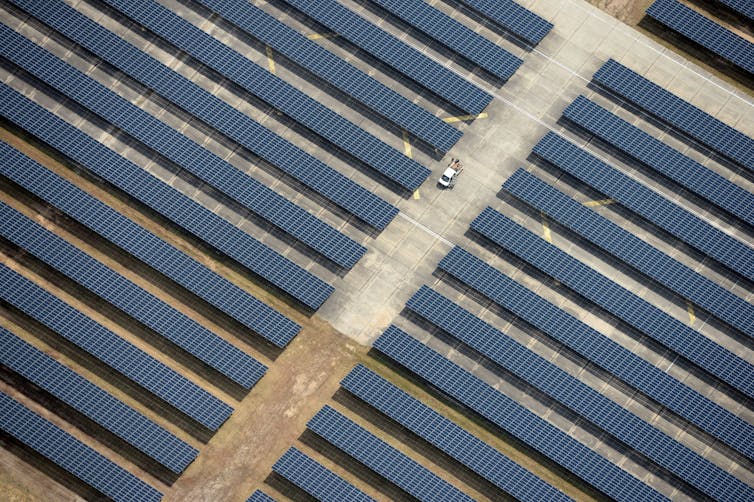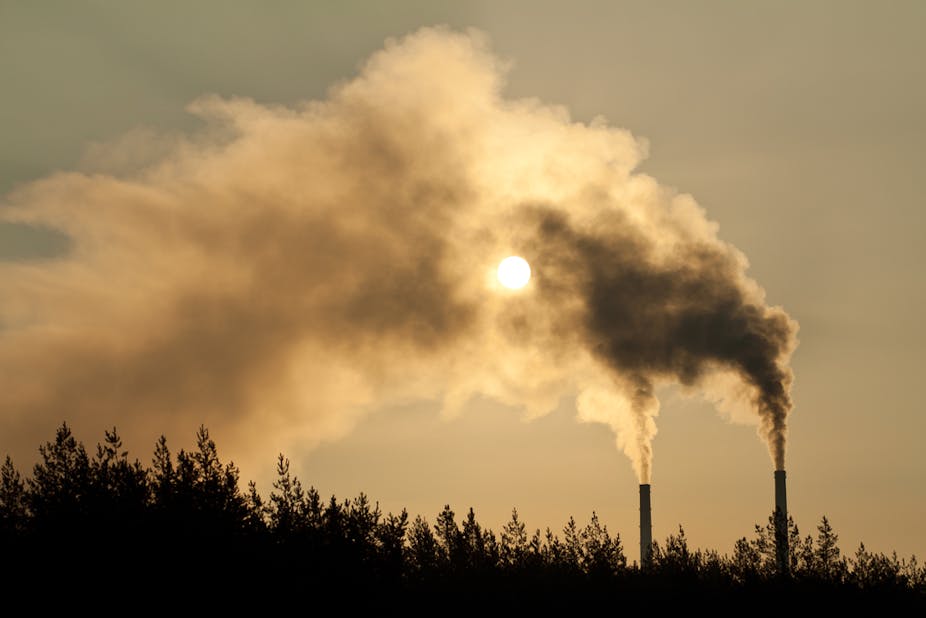There is a particular kind of budget shortfall that won’t get any mention in this election campaign, and yet this shortfall has immense implications for the economic and social future of Australia. The shortfall concerns the difference between the proportion of our carbon budget that we ought to be spending on constructing the renewable energy infrastructure and the proportion that we actually spend.
Within the next four decades we will need to construct a new energy infrastructure that is almost largely based on renewables - a mixture of wind, wave, photovoltaic, solar thermal and geothermal. We only have a short period to do this because the economic risks associated with climate change will eventually require us to largely disinvest from the old economy’s energy systems of oil, coal and gas.
A new balance sheet
The budget that will drive this is not the government’s economic budget or the national accounts but the carbon budget. Talking of climate change in budgetary terms is useful because it gives a clearer picture of the problem’s urgency. The planet can only absorb a certain amount of additional carbon dioxide without destabilising atmospheric and oceanic systems. The longer we delay action and continue to expend that finite budget, the closer we get to a time when we will not be able to halt the destabilisation process.
For this reason The Climate Institute has urged the government to adopt a carbon budget approach. One way of doing this is to see what amount of carbon emissions is required to stay under the 2 degree Celsius threshold that has been generally regarded as the upper limit for managing climate change. By knowing the limits, we can set real budgetary targets to guide policy. We can also see how much we fail by.
One of the most important uses of the carbon budget approach is to see where we spend our precious budget of carbon. And at the moment we are not spending it on the right things. There is a growing shortfall between the amount of carbon emissions we have to build new renewable infrastructure and what we are actually spending. This shortfall is increasing rapidly because we are blowing our carbon budget on the fossil fuel energy infrastructure that caused our current problems. Of even greater concern is the fact that the traditional political parties show no sign that they are aware of this carbon budget shortfall, let alone its importance to the future economic well-being of the country.
Climate cone of silence
The traditional political parties don’t seem to want to discuss the climate change issue during the election. My guess is that all their polling and focus group research tells them that people are thoroughly tired of the issue. Unfortunately, this avoidance won’t make the problem go away. Sick of hearing about climate change? I have some bad news for you. This issue will, for the very long foreseeable future, be the most important big-picture topic that the Australian economies and politicians will need to deal with. Our economy is more exposed than any other to the carbon bubble that will pop some time in the next few decades.
The most recent report from the Australian Climate Commission, The Critical Decade 2013: Climate change science, risks and response, makes it clear that the road ahead will be a rocky one. For the world to have a reasonable chance of staying under the 2 degrees Celsius global temperature by 2050, it has around 600-900 gigatonnes (billion tonnes) of CO2 emissions in the global carbon budget. However, this scenario leaves the entire global economy with a budget of only around 75 gigatonnes to remain under 2 degrees Celsius from 2050 to 2100.

Bill McKibben, Carbon Tracker and other interested groups have also pointed out that at some point the world’s investment, insurance and reinsurance, superannuation and risk-analysis communities will wake up to the financial risks involved and will pull the plug on oil, gas and coal investments. When that happens, those economies most reliant on the fossil fuels industry will be profoundly impacted, and Australia is one such economy.
The Australian Climate Commission has taken this message on board and, in turn, the message of The Critical Decade is relatively simple. For the world to keep under the difficult-to-achieve global temperature increase of 2 degrees Celsius by 2050, the majority of its fossil fuels need to remain unused and new power sources found. Globally and nationally, we now need to invest our limited carbon budgets in the renewable and sustainable sources of energy production that will carry us into the future.
Germany and other first-mover economies, such as Denmark and Sweden, are already doing this. Australia currently produces around 12% of its energy via renewables, while Germany produces more than 25% of its much larger energy needs from renewables, with plans for 80% by 2050.
Our carbon budget
Global CO2 emissions in 2011 were 33.376 Gt. Australia’s contribution to this global total was .0563 Gt, or 1.7%. Under the budgetary settings described above, this means that our budget is between 9.6-15.1 GtCO2 for the next 37 years to 2050. So, at current emission rates, we will overshoot our carbon budget by around 60% (7.5 GtCO2).
If we are to do our bit in keeping climate change within tolerable limits, Australia’s carbon budget from 2050-2100 is about 1.3 GtCO2. This equates to 26 million tonnes of carbon per year. The current annual rate of carbon emissions in the Australian economy is about 400 million tonnes, so it is clear that our energy systems need to change, and change dramatically.
But, more importantly, we are spending relatively little of our limited carbon budget on constructing the renewable infrastructure that will drive the Australian economy after 2050 while only producing something less than 10% of the carbon emissions that we produce today. And we will need a sizeable proportion of our remaining carbon budget to do that.
This is a massive transformational task and yet we are frittering away our carbon budget on maintaining the fossil fuel energy infrastructure of the past. The carbon debt that we are leaving to future generations of Australians is growing rapidly and the leaders of our two major political parties seem to be totally unaware of this crucial problem.

